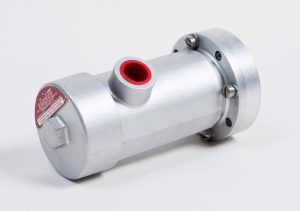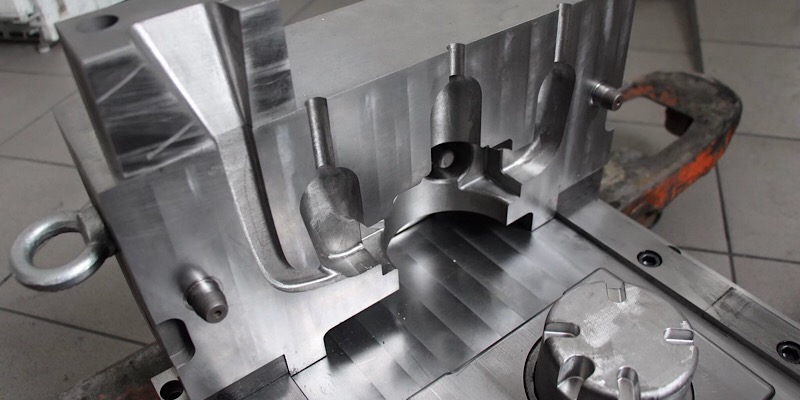Exploring the Crucial Applications and Utilizes of Light Weight Aluminum Factory in Modern Production
Light weight aluminum shops play a vital role in modern manufacturing, offering diverse markets with their unique buildings. From vehicle components that enhance gas efficiency to aerospace frameworks that focus on weight, aluminum's flexibility appears. Its applications reach building and construction and customer electronic devices, highlighting its longevity and energy efficiency. The innovations in light weight aluminum casting techniques and future fads call for a closer exam, as they may redefine its effect on manufacturing.
The Function of Light Weight Aluminum Foundries in Automotive Production
As the automobile sector significantly prioritizes lightweight products to enhance fuel effectiveness and performance, light weight aluminum foundries have actually become crucial factors to producing processes. These shops focus on generating parts that fulfill the strict needs of modern cars, such as engine blocks, transmission housings, and structural components. Aluminum's beneficial residential properties-- such as high strength-to-weight ratio, deterioration resistance, and outstanding thermal conductivity-- make it a suitable selection for automobile applications.
Additionally, aluminum shops utilize sophisticated spreading methods, including die spreading and sand casting, to create resilient and detailed components. This ability permits producers to maximize layouts for efficiency while decreasing weight. The use of light weight aluminum additionally sustains sustainability goals, as it is extremely recyclable and lowers power usage in vehicles. By facilitating the assimilation of light weight aluminum right into auto design, factories play a crucial duty in forming the future of the vehicle industry, advertising effectiveness and innovation across the board.
Aerospace Applications: Lightweight Solutions for Flight
Light weight aluminum shops play a significant duty in the aerospace field, where the demand for light-weight materials is extremely important for improving fuel performance and performance in aircraft. The distinct homes of light weight aluminum, including its high strength-to-weight ratio and rust resistance, make it an excellent selection for numerous aerospace parts. These parts consist of structural parts, engine housings, and landing gear, which add to total airplane efficiency.
The usage of light weight aluminum alloys, specifically those created with sophisticated casting techniques, permits the manufacturing of elaborate designs and complex forms while decreasing weight. In addition, light weight aluminum's recyclability lines up with the aerospace industry's sustainability goals, reducing ecological effect. With constant improvements in aluminum factory innovations, makers can maximize production processes, leading to raised effectiveness and minimized costs. As the aerospace sector significantly focuses on innovations that enhance efficiency, light weight aluminum factories will certainly stay integral to developing light-weight solutions for modern-day flight.
Structure and Construction: Enhancing Architectural Stability
In the building and building industry, a significant emphasis is placed on boosting structural stability with the use of light weight aluminum. Known for its high strength-to-weight ratio, light weight aluminum offers longevity without endangering on weight, which is vital in modern-day architectural layouts. Its resistance to corrosion additionally guarantees durability, making it a perfect product for various structural parts, including beam of lights, structures, and cladding.
Aluminum also promotes innovative style opportunities, permitting designers and architects to produce cosmetically pleasing structures while preserving safety and security standards. The material's convenience allows its application in both commercial and property tasks, from skyscrapers to bridges. Furthermore, advancements in aluminum factory strategies have actually boosted the accuracy of light weight aluminum components, ensuring they satisfy rigorous building ordinance. Overall, the combination of aluminum in building not only improves structural integrity however likewise adds to sustainable building practices, given its recyclability and energy-efficient production methods.
Consumer Electronics: The Rise of Aluminum in Technology
In the domain name of customer electronic devices, aluminum has actually obtained prestige as a result of its light-weight layout advantages and exceptional thermal conductivity. This shift not just improves product portability but also boosts gadget performance by efficiently dissipating heat. As technology proceeds to progress, the function of aluminum in developing smooth and reliable tools is progressively considerable.
Lightweight Layout Benefits
As consumer electronics evolve, the need for lightweight yet resilient materials has actually surged, making aluminum a significantly prominent choice among makers. Its low density permits for the development of smooth devices that are very easy to use and lug, significantly enhancing mobility. The strength-to-weight ratio of light weight aluminum guarantees that items can stand up to day-to-day deterioration without compromising performance. In addition, the malleability of light weight aluminum enables suppliers to create intricate shapes and kinds, even more adding to innovative appearances and functionality. This light-weight feature also plays an essential function in power performance, as lighter devices need less power to operate. Because of this, light weight aluminum not just fulfills the developing visual needs however additionally aligns with the contemporary emphasis on sustainability in customer electronic devices.
Thermal Conductivity Advantages
Thermal conductivity is an important aspect in the efficiency of consumer electronics, and aluminum excels in this domain name. Its high thermal conductivity permits for reliable warmth dissipation, which is essential for preserving ideal operating temperature levels in devices such as mobile phones, laptop computers, and pc gaming consoles. By helping with fast heat transfer far from sensitive parts, light weight aluminum assists protect against overheating, thus improving performance and extending tool long life. Moreover, the light-weight nature of aluminum matches its thermal buildings, making it a perfect option for portable technology. As suppliers progressively prioritize performance and energy effectiveness, aluminum's role in thermal administration becomes also a lot more substantial, causing its growing adoption in contemporary electronic designs. This fad emphasizes aluminum's relevance in consumer electronics advancement.
Marine Industry: Corrosion Resistance in Harsh Atmospheres
Deterioration resistance is a vital variable in the aquatic industry, where tools and structures are consistently subjected to rough saltwater settings. Light weight aluminum, specifically in its alloy forms, offers significant advantages in this regard. Its all-natural oxide layer gives a protective obstacle that prevents corrosion, making it optimal for vessels, docks, and various other aquatic applications.
Marine-grade light weight aluminum alloys, such as 5083 and 6061, are specifically made to withstand the harsh effects of saltwater and weather. These alloys not just visit here stand up to deterioration yet also preserve structural stability and strength gradually. Applications vary from hulls and superstructures of ships to elements in offshore platforms.
The lightweight nature of aluminum further improves its suitability, allowing improved gas efficiency and simplicity of handling - Aluminum Casting. As the marine sector remains to concentrate on toughness and performance, light weight aluminum stays an essential product option for resisting corrosion sought after marine settings
Innovations in Aluminum Casting Techniques
While standard light weight aluminum casting approaches have actually offered the industry well, recent developments are changing the landscape of aluminum manufacturing. Techniques such as 3D printing of mold and mildews and cores are acquiring traction, enabling rapid prototyping and decreased preparations. This advancement enables manufacturers to create intricate geometries that were formerly challenging to achieve with standard spreading methods. In addition, developments in die-casting innovation, including making use of high-pressure die-casting (HPDC), have boosted the accuracy and surface area coating of actors aluminum parts, bring about improved efficiency in different applications.
The fostering of financial investment spreading has actually allowed for higher layout flexibility and reduced material waste. Technologies in alloy structures are also substantial, as they improve mechanical residential or commercial properties and deterioration resistance. In general, these developments not just streamline production procedures yet additionally add to even more sustainable techniques within the aluminum factory industry, making it adaptable to the progressing needs of contemporary production
Future Patterns in Light Weight Aluminum Foundry Manufacturing
The future of light weight aluminum factory production is positioned for significant change via automation, improving performance and precision in making processes. Sustainable methods are progressively coming to be a priority, as foundries seek to lessen their ecological influence while meeting growing governing needs. Additionally, innovations in alloy growth will certainly allow the production of stronger, lighter materials customized for diverse applications, driving development in the sector.
Automation in Factory Processes

Sustainable Production Practices
An expanding focus on lasting manufacturing techniques is reshaping the future of aluminum foundry production. look at here now Sector leaders are progressively embracing energy-efficient modern technologies and reusing efforts to reduce waste and decrease carbon impacts. Using recycled light weight aluminum significantly lowers power intake contrasted to key aluminum manufacturing, making it a recommended choice for environmentally mindful producers. Furthermore, innovative casting methods are being created to enhance material effectiveness and reduce discharges. Companies are additionally buying sustainable power sources, such as solar and wind, to power their operations sustainably. Aluminum Casting. By incorporating these practices, the light weight aluminum factory industry not just fulfills regulatory demands yet additionally reacts to consumer need for greener products, inevitably paving the way for a much more sustainable manufacturing landscape
Advanced Alloy Development
Innovations in light weight aluminum alloy growth are set to play a considerable function in the future of shop manufacturing, specifically as sustainability and efficiency demands escalate. The industry is increasingly concentrating on producing high-strength, lightweight alloys that can hold up against extreme problems while decreasing environmental effect. Scientists are checking out innovative make-ups, such as aluminum-lithium and aluminum-scandium alloys, which assure enhanced mechanical buildings and decreased weight. Additionally, the integration of sophisticated production techniques, including additive production and precision spreading, enables more complicated geometries and decreased material waste. As governing pressures and customer choices change in the direction of greener options, the development see this website of energy-efficient and recyclable alloys will be crucial. The future landscape of light weight aluminum foundry production depends upon these developments in alloy innovation.

Often Asked Inquiries
What Are the Ecological Impacts of Light Weight Aluminum Factory Procedures?
Aluminum foundry procedures can cause considerable environmental effects, including greenhouse gas exhausts, power consumption, and waste generation. Additionally, inappropriate monitoring of toxins might bring about dirt and water contamination, affecting neighborhood environments and communities.
How Does Light Weight Aluminum Recycling Affect Shop Processes?
Light weight aluminum reusing enhances shop procedures by supplying a cost-effective raw material, reducing power intake and exhausts. This lasting method boosts efficiency, lessens waste, and supports the round economic climate, profiting both makers and the environment.
What Safety And Security Actions Are Executed in Aluminum Foundries?
Light weight aluminum foundries implement different precaution, including personal safety tools, correct air flow systems, normal safety training, fire prevention protocols, and devices upkeep treatments to decrease dangers and assure a secure workplace for all employees.
Just How Do Foundries Guarantee Quality Control in Light Weight Aluminum Spreading?
Foundries assure top quality control in light weight aluminum casting via extensive material inspections, exact temperature level tracking, standardized procedures, and routine screening of actors products. These procedures aid keep uniformity, minimize problems, and satisfy industry requirements successfully.
What Are the Expense Consider Aluminum Shop Manufacturing?
Expense factors in aluminum foundry production consist of basic material costs, energy consumption, labor prices, devices maintenance, and overhead expenditures. In addition, production quantity and complexity of layouts greatly influence general production expenses and earnings.
As the auto sector increasingly prioritizes light-weight materials to enhance fuel performance and efficiency, light weight aluminum factories have actually become important contributors to producing procedures. Light weight aluminum foundries play a significant duty in the aerospace industry, where the need for light-weight products is critical for improving fuel performance and performance in aircraft. In addition, developments in light weight aluminum shop methods have actually improved the precision of light weight aluminum parts, guaranteeing they satisfy stringent structure codes. While typical light weight aluminum casting approaches have actually served the market well, recent developments are changing the landscape of aluminum manufacturing. The use of recycled aluminum significantly lowers energy intake compared to main light weight aluminum production, making it a recommended choice for environmentally mindful makers.